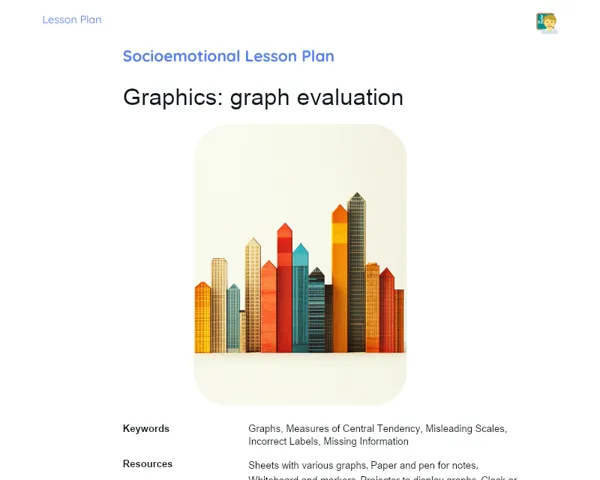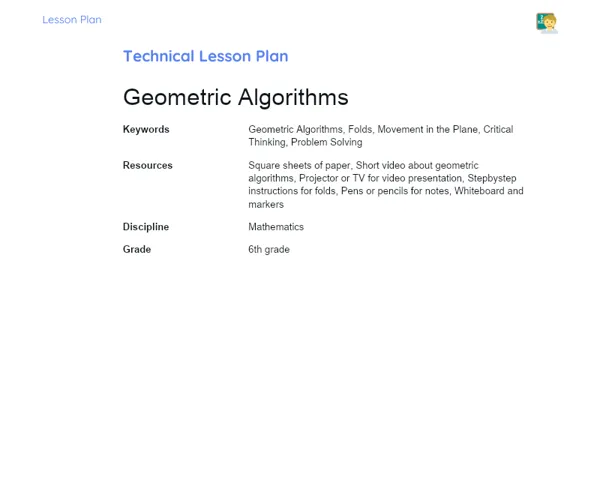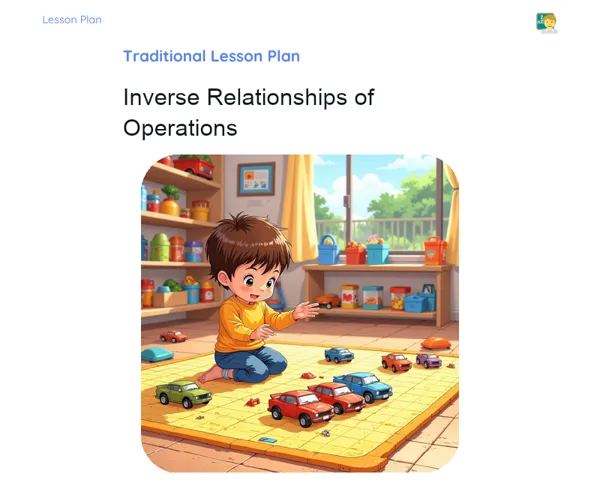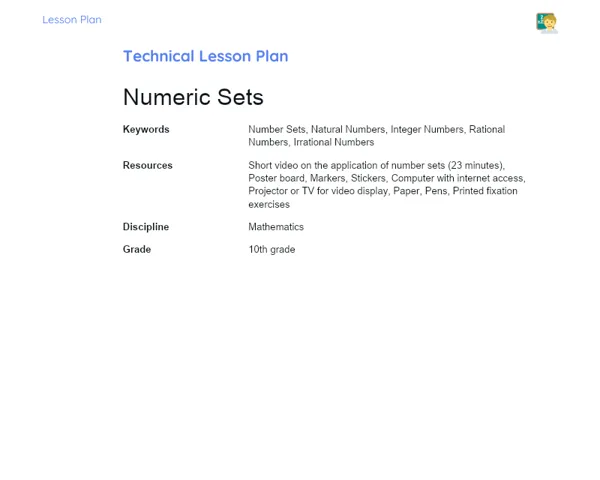Lesson Plan | Lesson Plan Tradisional | Complex Numbers: Basic Operations
| Keywords | Complex Numbers, Real Part, Imaginary Part, Imaginary Unit, i² = -1, Addition of Complex Numbers, Subtraction of Complex Numbers, Multiplication of Complex Numbers, Division of Complex Numbers, Exponentiation of Complex Numbers, De Moivre's Formula, Conjugate of a Complex Number |
| Resources | Whiteboard, Markers, Eraser, Multimedia projector, Slides or presentation on complex numbers, Printed copies of practical exercises, Scientific calculators, Notebook and pen for student notes |
Objectives
Duration: 10 - 15 minutes
The purpose of this stage is to introduce students to the topic of complex numbers, outlining the skills that will be developed throughout the lesson. This introduction is crucial for students to know what to expect and to focus on the key concepts and operations to be learned. It also sets the framework of the lesson and guides the students' attention to the specific learning objectives.
Objectives Utama:
1. Understand the definition and algebraic representation of complex numbers.
2. Learn the basic operations (addition, subtraction, multiplication, division, and exponentiation) with complex numbers.
3. Apply operations of complex numbers in practical and theoretical problems.
Introduction
Duration: 10 - 15 minutes
The purpose of this stage is to introduce students to the topic of complex numbers, detailing the skills that will be developed throughout the lesson. This introduction is essential for students to know what to expect and focus on the key concepts and operations to be learned. Additionally, it sets the scope of the lesson and directs the students' attention to the specific learning objectives.
Did you know?
A fascinating tidbit is that complex numbers have practical applications across various fields such as electrical engineering, physics, and computing. For instance, in electrical engineering, they play a vital role in analysing alternating current circuits. Moreover, in computer graphics, they are instrumental in efficiently rotating and scaling images.
Contextualization
To kick off the lesson on complex numbers, start by explaining that complex numbers were developed to solve quadratic equations that didn’t have any real solutions. For centuries, mathematicians struggled with the challenge of finding the square root of negative numbers which eventually led to the introduction of this new category of numbers. Complex numbers expand on real numbers and are made up of a real part and an imaginary part, expressed in algebraic form as a + bi, where 'a' and 'b' are real numbers, and 'i' is the imaginary unit, essentially the square root of -1.
Concepts
Duration: 60 - 70 minutes
The purpose of this stage is to deepen students' understanding of basic operations with complex numbers. By covering each operation in detail and providing practical examples, students will be better equipped to handle these numbers. Guided problem-solving will help consolidate learning and build confidence in applying the operations.
Relevant Topics
1. Definition and Representation of Complex Numbers: Explain that a complex number is represented in the form a + bi, where a is the real part and b is the imaginary part, and i is the imaginary unit, defined as the square root of -1.
2. Addition and Subtraction of Complex Numbers: Demonstrate how to add and subtract complex numbers by combining the real parts and the imaginary parts separately. Example: (3 + 4i) + (1 + 2i) = 4 + 6i.
3. Multiplication of Complex Numbers: Explain how to multiply complex numbers using the distributive property and the fact that i² = -1. Example: (1 + 2i)(3 - 2i) = 13 + 1(-2i) + 2i3 + 2i(-2i) = 3 - 2i + 6i - 4(-1) = 3 + 4i.
4. Division of Complex Numbers: Teach how to divide complex numbers by multiplying the numerator and the denominator by the conjugate of the denominator. Example: (1 + 2i) / (3 - 2i) = [(1 + 2i)(3 + 2i)] / [(3 - 2i)(3 + 2i)] = (3 + 2i + 6i + 4) / (9 + 4) = (7 + 8i) / 13 = 7/13 + (8/13)i.
5. Exponentiation of Complex Numbers: Address exponentiation of complex numbers using De Moivre's formula for integer powers. Example: (cos θ + i sin θ)ⁿ = cos(nθ) + i sin(nθ).
To Reinforce Learning
1. Solve the addition of the complex numbers (5 + 3i) and (2 - 4i).
2. Calculate the multiplication of the complex numbers (2 + i) and (3 - i).
3. Divide the complex number (4 + 2i) by the complex number (1 - i).
Feedback
Duration: 15 - 20 minutes
The aim of this stage is to review and solidify the knowledge students have acquired about basic operations with complex numbers. The in-depth discussions on the solutions to the questions, along with student engagement through queries and reflections, seek to reinforce their understanding of the concepts and ensure they've got the confidence to apply these operations independently.
Diskusi Concepts
1. ❓ Discussion on Addition of Complex Numbers: To solve the addition of the complex numbers (5 + 3i) and (2 - 4i), combine the real parts and the imaginary parts separately. Thus, (5 + 2) + (3i - 4i) = 7 - 1i. It's essential to keep the real and imaginary parts apart during the operation. 2. ❓ Discussion on Multiplication of Complex Numbers: To calculate the multiplication of the complex numbers (2 + i) and (3 - i), use the distributive property and remember that i² = -1. Thus, (2 + i)(3 - i) = 23 + 2(-i) + i3 + i(-i) = 6 - 2i + 3i - 1 = 5 + i. Detail each step and the importance of using the correct properties of complex numbers. 3. ❓ Discussion on Division of Complex Numbers: To divide the complex number (4 + 2i) by (1 - i), multiply the numerator and denominator by the conjugate of the denominator. Thus, [(4 + 2i)(1 + i)] / [(1 - i)(1 + i)] = (4 + 4i + 2i + 2i²) / (1 + 1) = (4 + 6i - 2) / 2 = (2 + 6i) / 2 = 1 + 3i. Explain the significance of using the conjugate to simplify the expression and obtain the complex number in algebraic form.
Engaging Students
1. 👨🎓 Question 1: What is the difference between the real and imaginary parts of a complex number? 2. 👩🎓 Question 2: Why is it necessary to use the conjugate of the denominator when dividing complex numbers? 3. 👨🏫 Reflection: How do operations with complex numbers resemble operations with real numbers, and how do they differ? 4. 👩🏫 Reflection: In what practical situations can you imagine complex numbers being useful?
Conclusion
Duration: 10 - 15 minutes
The purpose of this stage is to summarise and consolidate the key points covered throughout the lesson, reinforcing students' grasp of the content. Additionally, this stage aims to correlate theoretical concepts with practical applications, highlighting the significance of the studied topic in relation to students' everyday lives and prospective careers.
Summary
['Understanding and algebraic representation of complex numbers as a + bi, where a is the real part and b is the imaginary part.', 'Addition of complex numbers, where the real and imaginary parts are combined separately.', 'Subtraction of complex numbers, combining the real and imaginary parts separately.', 'Multiplication of complex numbers, utilizing the distributive property and the concept that i² = -1.', 'Division of complex numbers, through multiplying the numerator and denominator by the conjugate of the denominator.', "Exponentiation of complex numbers, employing De Moivre's formula."]
Connection
The lesson linked the theory of complex numbers to practical application by working through step-by-step examples, providing a solid understanding of how to execute basic operations with complex numbers. Furthermore, discussions around their practical applications in fields like electrical engineering and computer graphics illustrated how these concepts play a role in real-world scenarios.
Theme Relevance
Complex numbers are foundational in multiple fields of science and technology. They are essential in analyzing electrical circuits, describing waves in physics, and in algorithms used in computer graphics for image rotation and transformation. Grasping these numbers empowers students to expand their understanding beyond real numbers and apply them to real-life problems.



